The game of horseshoes is played widely across the United States and Canada. It is estimated that upwards of 15 million people play. It is not just one of the most popular backyard games but there are also tournaments and leagues. The National Horseshoe Pitchers Association is a U.S. organization dedicated to the game.
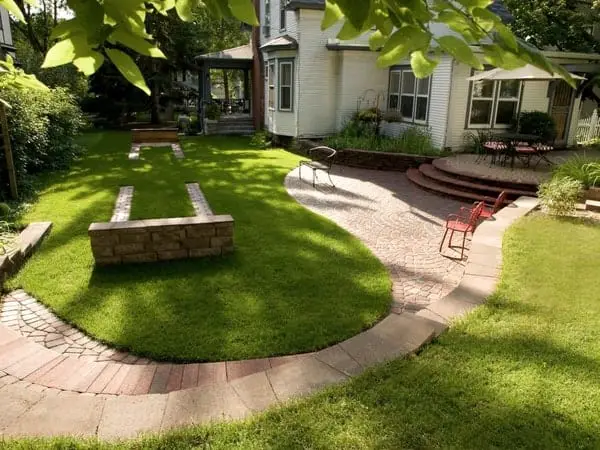
A Brief History of the Game of Horseshoes
It is believed that as early as the second century, camp followers of the Greek army played a game based on the discus throw played at the Olympic Games. Instead of slinging a disc for distance, the camp followers used discarded horseshoes and thew them at a stake. Eventually one stake became two.
In 1869, England set rules to govern the game. At that time the game was played with a quoit, which is a round metal ring. Horseshoes history is intermingled with the game of Quoits. Both games have the same origin, but while Quoits is played with a ring, horseshoes is played, obviously, with horseshoes. The rules of the games do differ as well.
Horseshoes has always been popular with soldiers. After the Civil War horseshoe courts started showing up in backyards all over Union States. The soldiers having brought the game home from the war with them. It was in the early 1900’s that the first leagues started to be formed and tournaments held.
Today horseshoes continues to be a popular game and is enjoyed by men, women and children, both young and old alike.

FunFact– People put horseshoes over doorways because many of them thought it was a sign for good luck and it protected whoever walked under it from evil spirits.
Playing By The Rules
The game is played by two to four players taking turns pitching their horseshoes. The first player throws both horseshoes at the opposite stake one after the other. The second player then does the same thing. The score is calculated and both players switch to the other end for the next inning. The object of the game is to pitch the horseshoe so that it comes to rest encircling the stake, or within 6″ of the stake to score. The first player to reach 21 points wins.
There are actually two different scoring methods. Count-All Scoring and Cancellation Scoring.
Count-All Scoring – Contestants receive credit for all points. Each player has the chance to score a maximum of six points per round or “inning”. Live shoes will either be ringers, leaners or close to the stake. Ringers are horseshoes that land around the stake; ringers will get you three points, the most points awarded in the game. Leaners are horseshoes that have landed vertically and are leaning against the stake rather than encircling it. Leaners are worth one point. Any horseshoe that lands within 6 inches of the stake is considered close to the stake and counts as one point. Dead shoes are shoes that landed outside the playable area.
If both your live shoes land closer to the stake than those of your opponent, you earn two extra points. Some people play a variation of this scoring method, where only ringers are awarded points. No points are awarded for dead shoes.

Cancellation Scoring – The games is scored the same as with count-all scoring except you have the ability to cancel out points your opponent has scored. In the same inning, if your opponent throws a ringer and then you also throw a ringer, instead of you both getting 3 points, you cancel out your opponents points. This is called a dead ringer and no points are awarded to either player. No points are awarded for any other tied close shots or leaners.
Scoring may seem a bit complicated. Here is a breakdown of the scoring method.
- If no ringers are thrown by either player, the nearest horseshoe to the stake counts as one point.
- If both players throw a single ringer each, the ringers are cancelled out and the nearest of the other two horseshoes scores one point.
- Should both players score two ringers each, they cancel each other out and no points are scored.
- If one player pitches one ringer but the other player pitches two ringers, three points are scored.
- If a single ringer has been scored that player wins three points plus an extra point if that player’s other horseshoe is the closest of the remaining three.
- If a player achieves two ringers and the other player manages none, six points are scored.
- Finally, if one shoe is leaning on the stake and one is just touching it, the are both considered to be at the same distance.
The Horseshoes
Nowadays most of us don’t have used horseshoes laying around. The sport of horseshoes is played with specially manufactured equipment. The NHPA states, It shall not weigh more than 2 pounds, 10 ounces; 2) it shall not exceed 7-1/4 inches in width, 7-5/8 inches in length and, on a parallel line 3/4 inch from a straightedge touching the points of the shoe, the opening of the shoe must not exceed 3-1/2 inches. (A 1/8 inch tolerance to 3-5/8 inches is allowed on used shoes.)
Having given you the official regulations, the reality is horseshoe sets are readily available online and at most sporting good stores and stores that sell games.
FunFact– Horseshoes for horses are usually made from iron, rubber, plastic, rawhide or a combination of these.
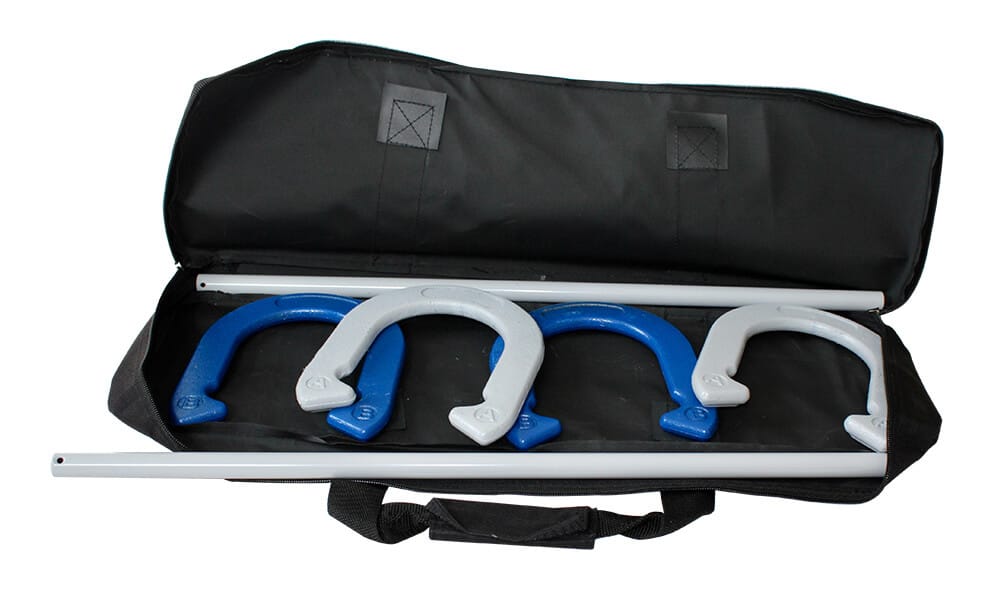

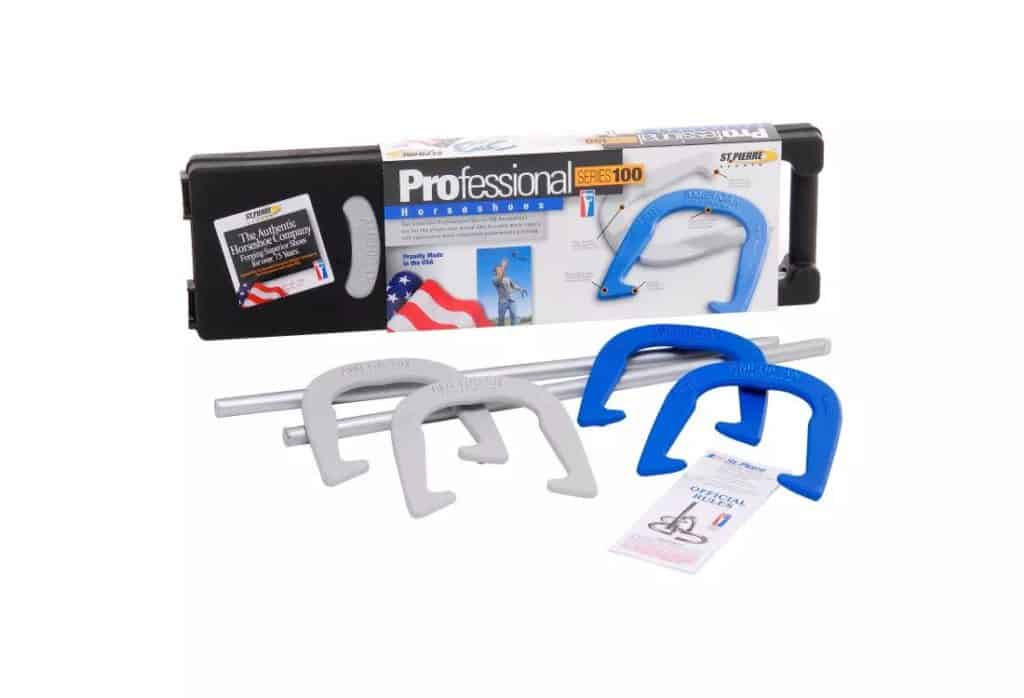
If you would like to purchase an item you’ve seen, you can click here to see recommendations on the Products We Love page. As an Amazon Associate I earn from qualifying purchases.
Building a Basic Court
If you are only looking to play every once in a while and just want the basic set up and dimensions, it’s really easy.
- Lay out a “pit” around each stake, measuring between 43 and 72 inches long and between 31 and 36 inches wide.
- From the center of the pit, plant two 36″ by 1″ stakes into the ground leaving 14″ above ground. The stakes should be on a 12 degree angle from the vertical (approx. 3 inches), leaning towards each other.
- Loosen up 2 or 3 inches of soil surrounding the stake. Be careful not to go too deep and cause the stake to not be firmly anchored.
- Place foul lines at 27 and 37 feet from each stake. 27 is for children under 18, women and men over 70, 37 for adult males.*
*Ugh, that is from the official rules. Who says a woman can’t play horseshoes by the same rules a man can?
Making it Fancy
If you really love the game of horseshoes and would like to build a horseshoe court in your backyard there a quite a few ways to do so.
If you have a large back yard, go with a full court. For smaller yards you can do a half court. There’s no horseshoe police. You do you.
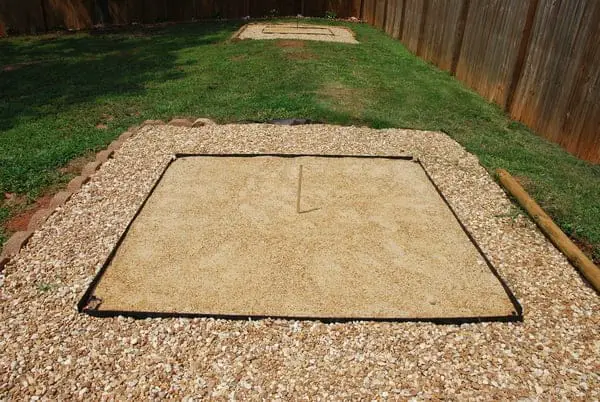
This horseshoe pit design is a great idea and it looks beautiful. However, its creator notes that when the horseshoes hit the pea gravel pebbles are dispersed knocking them out of the pit making a mess. This has prompted them to remove the pea gravel. Another solution would be to build the borders higher.
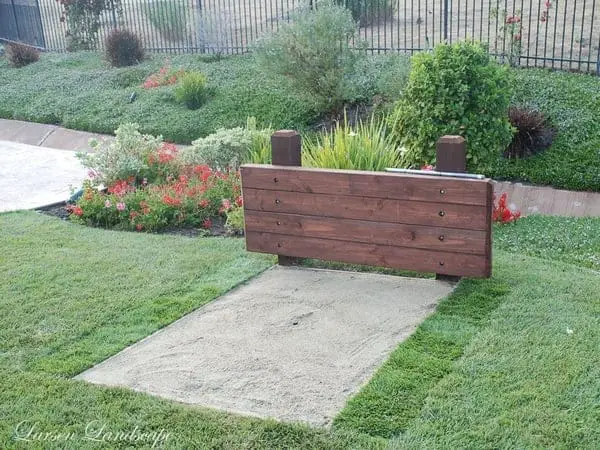
Here is a simple horseshoe pit design where the pit area is simply filled with sand and a protective back board is added. With the beautiful landscape surrounding it, it’s the perfect place to pitch a few rounds.
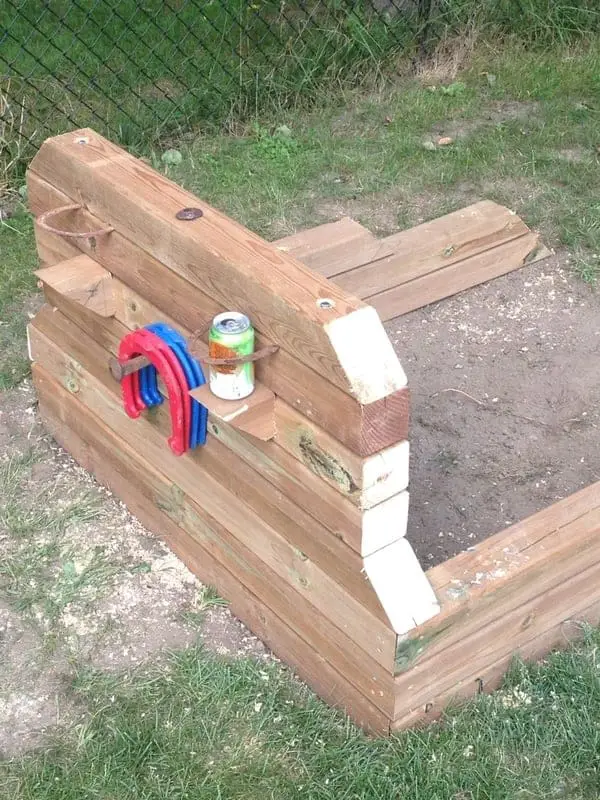
This clever builder thought to included a place to store the horseshoes. But more importantly a place to put your beer when its your turn. Smart.
Horseshoe Pit Plans
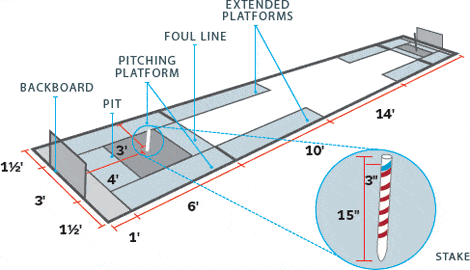
This is a great little chart if you have your own idea in mind and just want a good idea of the actual layout.
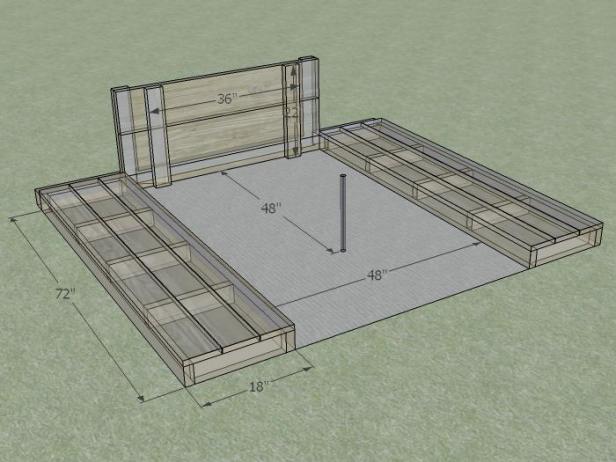
DIY Network has this fantastic, detailed set of plans for building a horseshoe pit available on their website. Click here to see.
Horseshoe Safety
You should always have a safety talk with young players. Horseshoes is considered a safe sport, but because the sport entails throwing hunks of metal in the air, there are some clear hazards that need to be avoided.
Those pitching the horseshoes, and any spectators, should be aware of when the horseshoes are being pitched. No one should stand directly behind a player who is pitching as the back swing could hit them. Be watchful in case a shoe bounces off the top of the stake or off of the ground around the horseshoe pit. If possible a protective barrier or fencing should be placed around the pitching area to keep people safe.
Watch your step. The stakes and any backboards you may have put up are a potential tripping hazard.
Be safe. No one wants to get impaled or clocked in the head. Now go outside and play some horseshoes.

